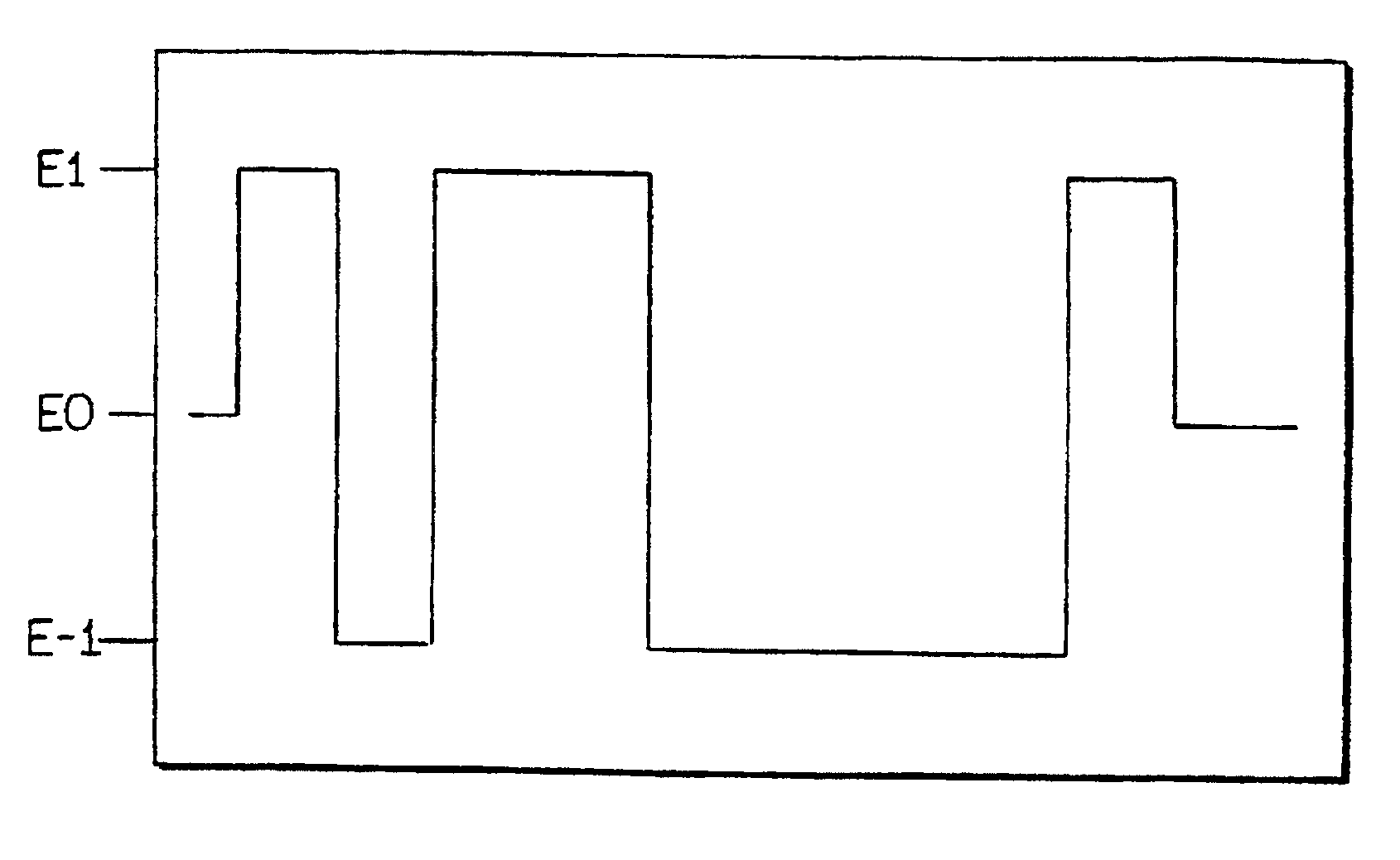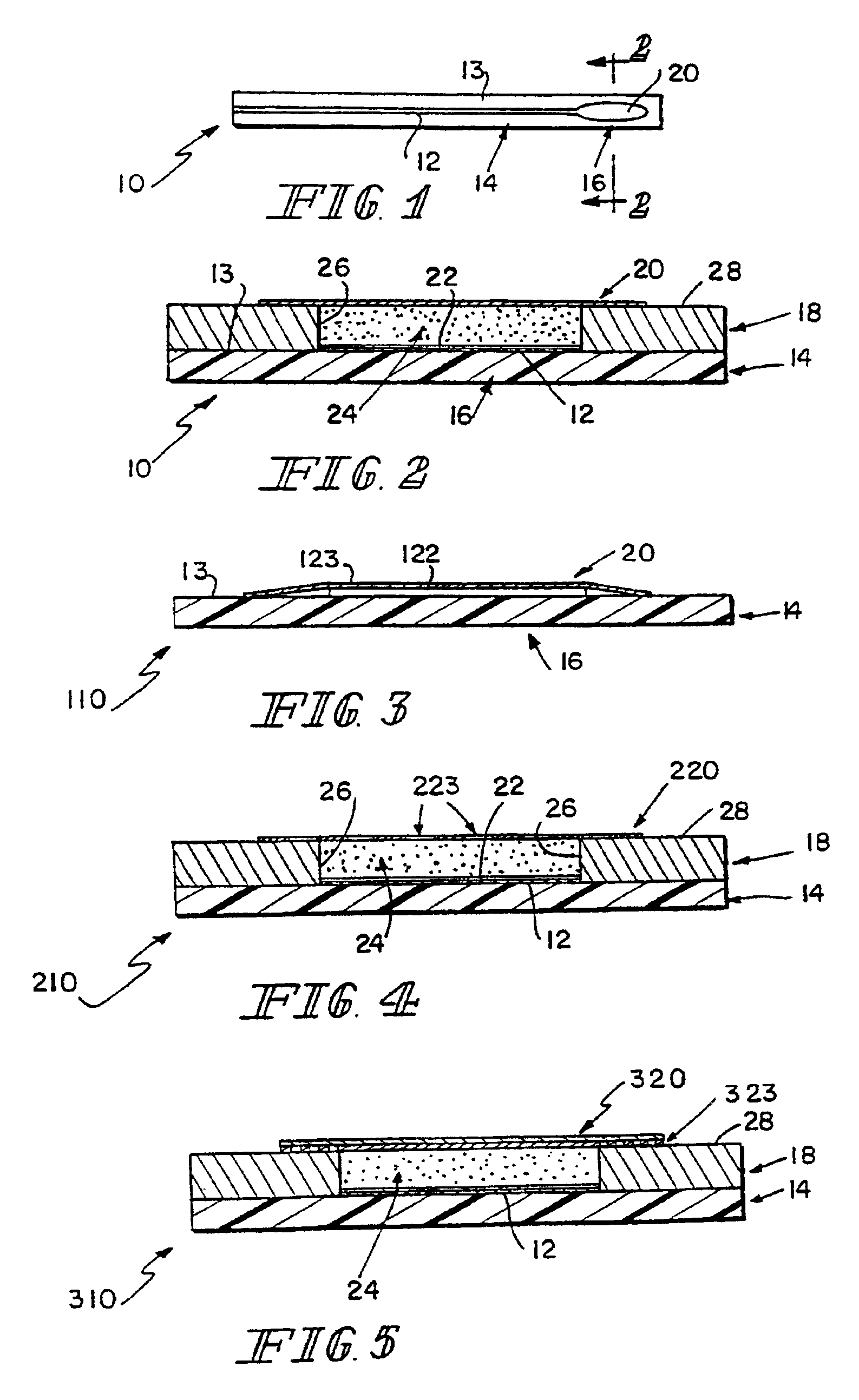Small volume biosensor for continuous analyte monitoring
a biosensor and continuous analyte technology, applied in the field of sensors, to achieve the effect of reducing the refractory period (the recovery period) of the sensor, improving the diffusional equilibrium rate, and low cos
- Summary
- Abstract
- Description
- Claims
- Application Information
AI Technical Summary
Benefits of technology
Problems solved by technology
Method used
Image
Examples
example 1
[0052]A sensor in accordance with the present invention is formed similarly to sensor 10 of FIGS. 1-2, except that it does not include membrane 20. The enzyme and electron mediator is entrapped in a polymer matrix on the electrode. This polymer matrix was prepared by electropolymerization of pyrrole and pyrrole-mediator derivatives. This method entrapped the enzyme in a polymer matrix on the electrode, and, by incorporating mediator-derivatized pyrrole into the polymer, provided for an immobilized mediator for transfer of electrons within the sensor.
[0053]Platinum disc electrodes were suitable for preparing sensors in accordance with this method. A mediator which was suitable for copolymerization in a matrix was be prepared by the following reaction sequence:
Synthesis of Pyrrole-Modified Osmium (Bisbipyridyl) Pyridinium Chloride
[0054]Pyrrole-modified Osmium (bisbipyridyl) pyridinium Chloride was prepared by the following reaction sequence:
Cleaning Procedure for Platinum Electrodes...
example 2
[0071]A sensor 410 consists of conductors 12, 15 and reagents deposited on a flat polymeric substrate 14. Materials for encapsulation of the conductors 12, 15 are provided, and reagents that form a semipermeable biocompatible layer over the reagent-containing sensing area 16. See FIG. 10.
[0072]Process and materials:[0073]Substrate: Polyimid (such as Kapton® polyimide film, which is commercially available from E.I. DuPont de Nemours, Wilmington, Del., and Upilex® polimide film which is commercially available from UBE Industries Ltd, Japan) 0.005″ (0.127 mm) thick with gold electrodes and conducting tracks.[0074]Processing: Material is washed with water, acetone, and methylene chloride, then dried at 180° C. for 20 hours. Material is placed in a vacuum chamber and metalized with 50 Å Chromium followed by 500 Å Gold. Metalized material is removed. A laminated photoresist is applied. The resist is exposed, and developed in an aqueous salt solution. Then the metal pattern is developed in...
PUM
| Property | Measurement | Unit |
|---|---|---|
| molecular weight | aaaaa | aaaaa |
| roughness | aaaaa | aaaaa |
| roughness | aaaaa | aaaaa |
Abstract
Description
Claims
Application Information
 Login to View More
Login to View More - R&D
- Intellectual Property
- Life Sciences
- Materials
- Tech Scout
- Unparalleled Data Quality
- Higher Quality Content
- 60% Fewer Hallucinations
Browse by: Latest US Patents, China's latest patents, Technical Efficacy Thesaurus, Application Domain, Technology Topic, Popular Technical Reports.
© 2025 PatSnap. All rights reserved.Legal|Privacy policy|Modern Slavery Act Transparency Statement|Sitemap|About US| Contact US: help@patsnap.com



